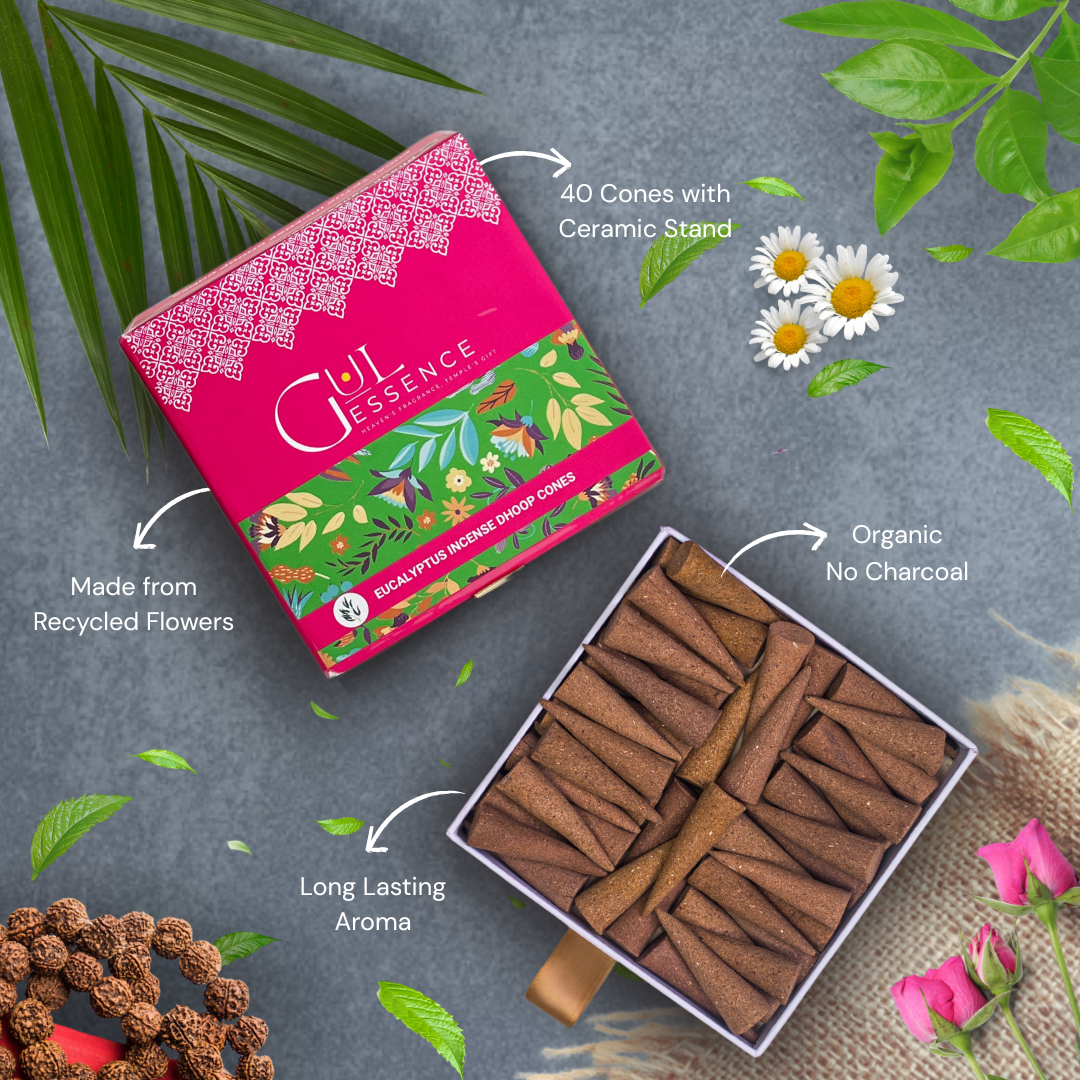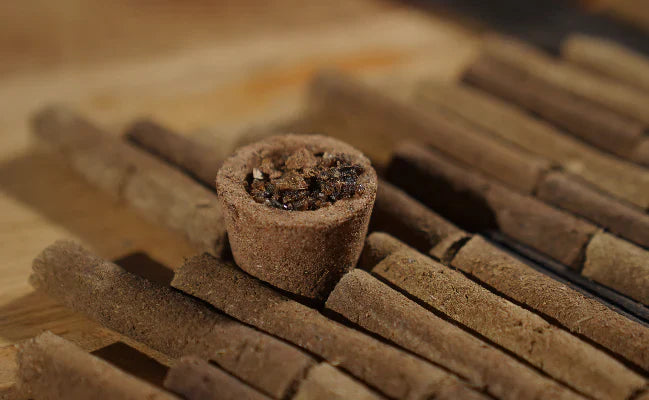Incense sticks, commonly known as agarbatti, have long been a staple in many cultures for their soothing aromas and spiritual significance. As the world becomes more conscious of sustainability and natural products, the process of creating organic incense sticks has gained attention. Here's a step-by-step look at how agarbatti made from temple flowers and cow dung are crafted, blending tradition with eco-friendly practices.
The Process: From Temple Flowers to Organic Incense Sticks
Collecting Temple Flowers
The journey begins at various revered temples, such as the Khatu Shyam temple, where worshippers offer flowers as a symbol of their devotion. Instead of letting these beautiful flowers go to waste, Gulessence collects the flowers with respect and care, ensuring their sanctity is maintained.
Hand-Sorting and Sun-Drying the Petals
Once the flowers reach the facility, the petals are meticulously sorted by hand. This step ensures that only the highest quality petals are used in the agarbatti. The selected petals are then spread out to sun-dry. Sun-drying is a natural method that preserves the essence and aroma of the flowers, maintaining their vibrant fragrance.
Grinding the Dried Petals
After the petals are thoroughly dried, they are ground into a fine powder. This powdered form of the flowers is crucial as it enhances the fragrance of the incense sticks. The grinding process is carried out with great care to retain the delicate scents of the flowers.
Creating the Incense Mixture
The ground flower powder is then mixed with natural cow dung, which serves as a binder. Cow dung not only binds the ingredients together but also contributes a subtle, earthy aroma and possesses antimicrobial properties. This mixture is carefully prepared to ensure the right consistency and fragrance.
Forming the Incense Sticks
The fragrant mixture is rolled into cylindrical sticks, forming the base of the agarbatti. This process requires precision to ensure each stick is uniform and holds together well. The freshly rolled sticks are then laid out to dry.
Curing for Optimal Fragrance
Once the sticks are formed, they undergo a curing process. This step is essential for developing the optimal fragrance. The incense sticks are stored in a controlled environment where they dry slowly, allowing the scents to mature and blend perfectly.
Packaging the Finished Incense Sticks
After the curing process, each agarbatti is inspected to meet high-quality standards. The sticks are then packaged in eco-friendly materials, and ready to be distributed. The packaging not only protects the incense sticks but also aligns with a commitment to sustainability.
The Benefits of Organic Incense Sticks
Eco-Friendly:
Using temple flowers and cow dung ensures that the materials are natural and biodegradable, reducing environmental impact.
Chemical-Free:
Unlike many commercial incense sticks, these organic sticks are free from harmful chemicals and synthetic fragrances, offering a pure and natural aroma.
Sustainable Practice:
The process supports sustainable practices by repurposing temple flowers that would otherwise be discarded.
Aromatherapy:
The natural fragrances derived from temple flowers provide a soothing and calming effect, perfect for meditation, relaxation, and creating a serene environment.
Creating organic agarbatti from temple flowers and cow dung is not only an eco-friendly practice but also a way to connect spirituality with nature. By choosing incense sticks made through this process, you are supporting sustainable practices and bringing a piece of tranquility into your home. These handcrafted incense sticks promise a delightful and authentic scent experience, embodying the perfect blend of tradition and environmental consciousness.
Try them today from Gulessence and immerse yourself in their natural, heavenly aroma. Feel free to share your thoughts or questions in the comments below. We’d love to hear about your experiences with these incense sticks!





